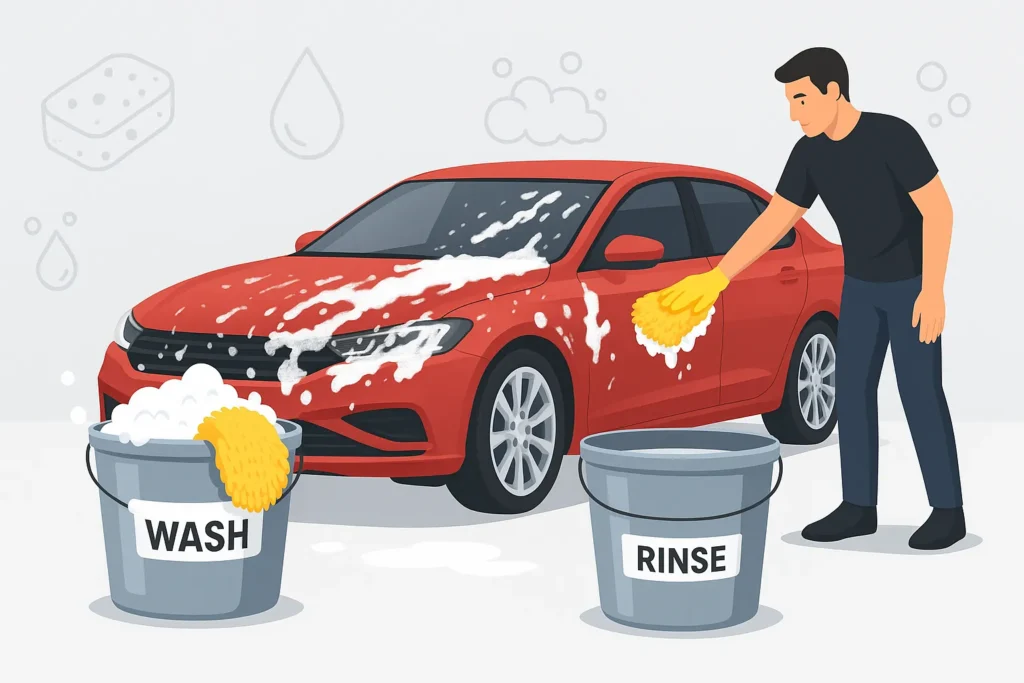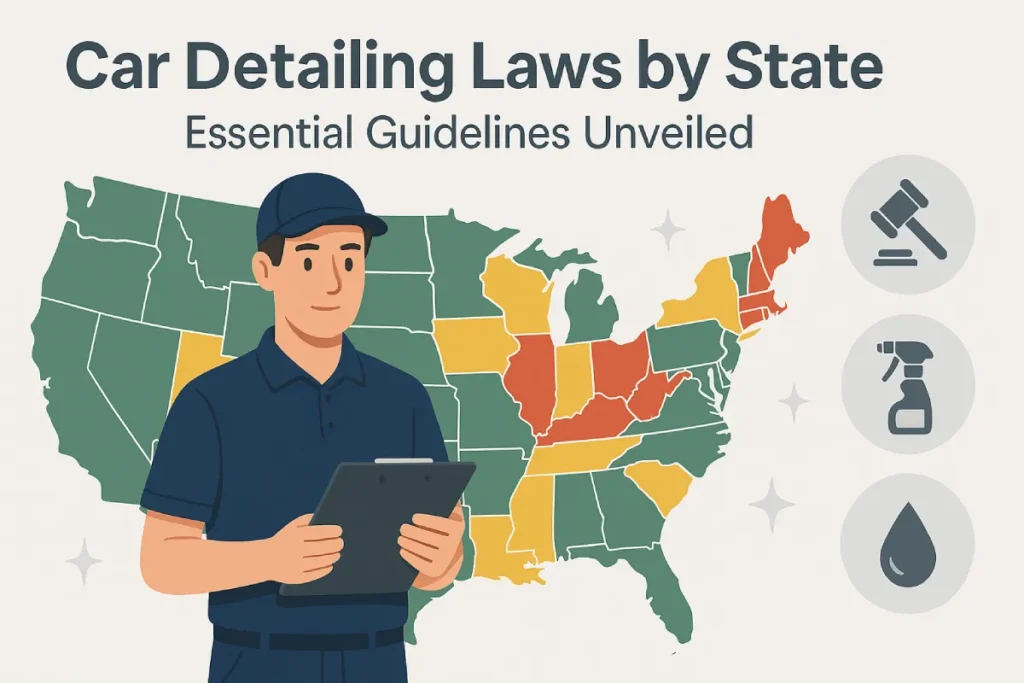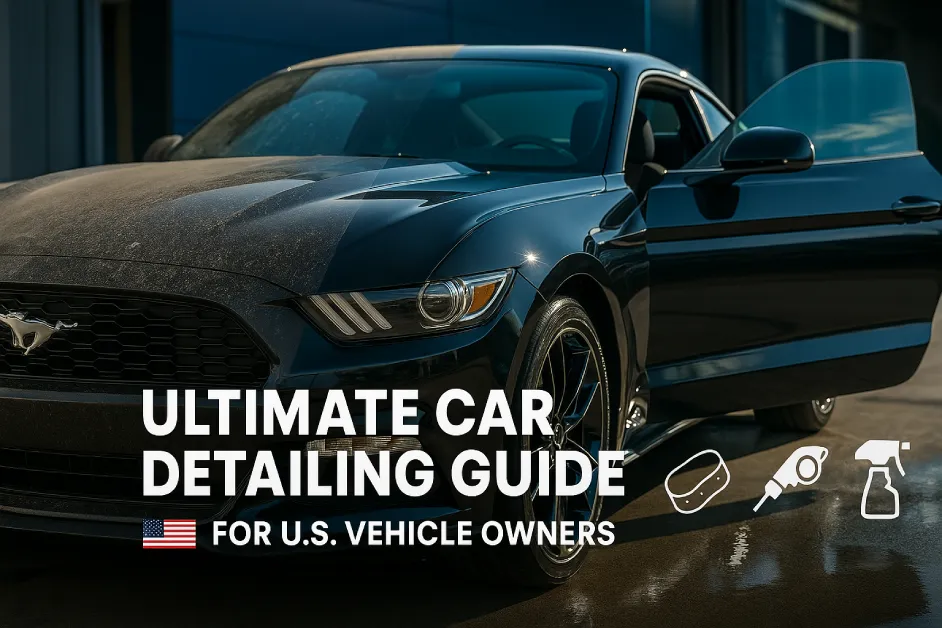Do you want your car to shine like it’s fresh off the lot? If you’ve been scrubbing away with a single bucket and wondering why those pesky scratches and streaks keep appearing, it’s time for a change.
The secret to a spotless, scratch-free finish lies in the two-bucket method. Imagine enjoying the satisfaction of a gleaming car without the worry of damaging its paint. By reading further, you’ll unlock the secrets to this simple yet effective washing technique, transforming your car care routine into a rewarding experience.
Get ready to revolutionize the way you wash your car and preserve its beauty for years to come. You deserve to drive a car that turns heads, and we’re here to show you how.
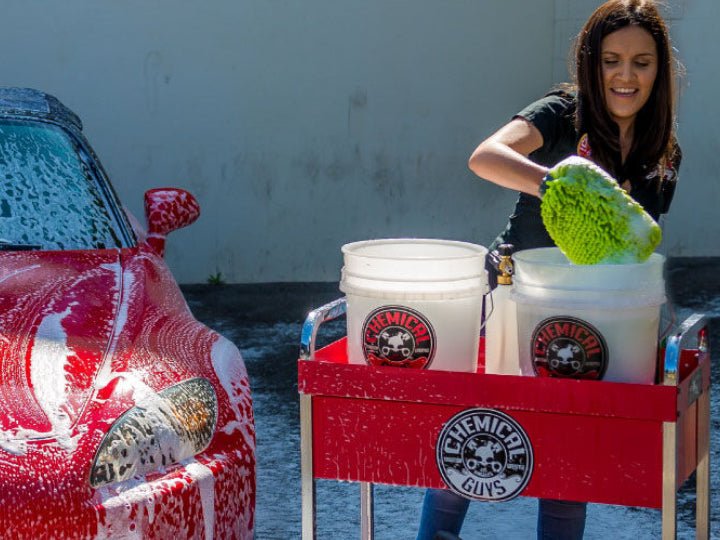
Credit: www.chemicalguys.com
Benefits Of The 2-bucket Method
Washing your car with the 2-bucket method has many advantages. This technique helps keep your car cleaner for longer. It also protects your car’s paint from scratches. Let’s explore why the 2-bucket method is beneficial.
Reduces Swirl Marks And Scratches
The 2-bucket method minimizes swirl marks. One bucket holds soapy water. The other holds clean water for rinsing. This separation reduces dirt transfer back onto your car.
Swirl marks often result from dirty water. Using clean water for rinsing helps avoid this. Your car’s paint remains smooth and shiny.
Efficient Dirt Removal
Dirt removal is more effective with two buckets. The rinse bucket releases grit from the wash mitt. Each dip removes contaminants from the mitt.
Cleaner mitts mean a cleaner car. The dirt stays in the rinse bucket, not on your car.
Conserves Water
This method conserves water. You use only two buckets of water. This limits waste and still cleans your car well.
It’s an eco-friendly approach to car washing. Your car gets clean, and you save water.
Simple And Cost-Effective
The 2-bucket method is simple to learn. It requires only basic items: two buckets, a mitt, and soap.
You don’t need special tools or expensive equipment. It’s easy on your wallet and effective for cleaning.
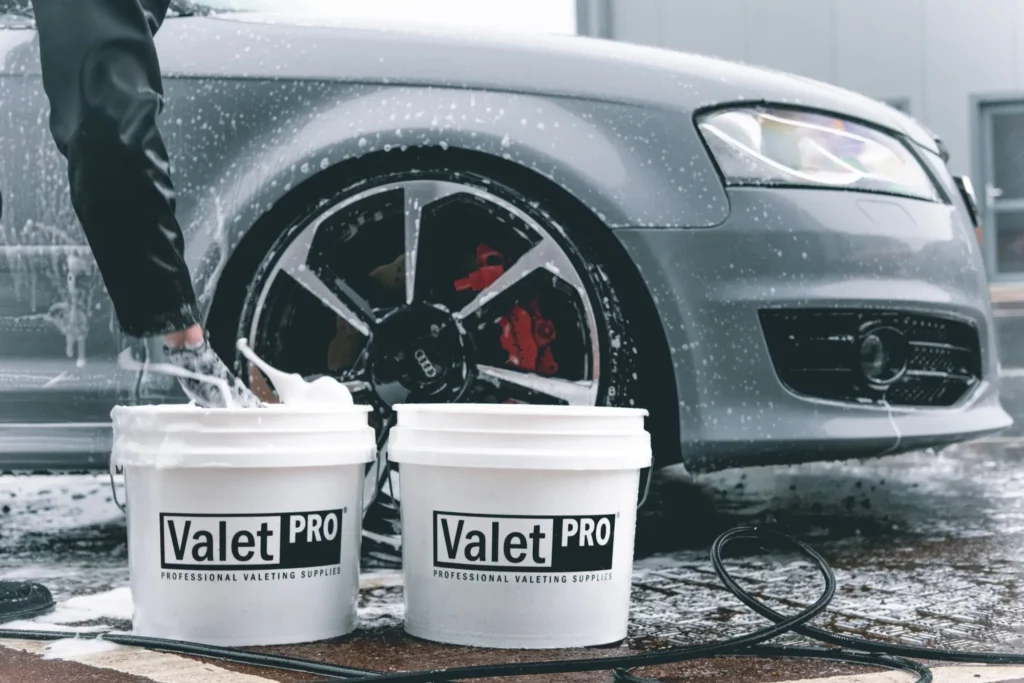
Credit: www.valetpro.global
Essential Tools And Materials
Washing your car the right way requires the right tools. The 2-bucket method is a popular choice. It minimizes scratches and keeps your car looking new. Let’s dive into what you’ll need.
Choosing The Right Buckets
Pick two sturdy buckets. One for soapy water and the other for rinsing. A 5-gallon size works best. It provides enough water to clean your car thoroughly. Choose buckets with grit guards to trap dirt. This keeps it off your wash mitt.
Selecting Quality Wash Mitts
A good wash mitt is crucial. Microfiber mitts are a great choice. They are soft and gentle on paint. They also hold a lot of soapy water. This helps in lifting dirt without scratching. Avoid using sponges. They can trap grit and cause swirl marks.
Importance Of Ph-balanced Car Soap
Always use pH-balanced car soap. It is designed for vehicle surfaces. Regular soaps can strip wax and damage paint. A pH-balanced soap cleans without harming the finish. It rinses off easily, leaving no residue. This is key for a shiny, spotless car.
Preparation Steps
Begin by gathering all necessary supplies: car shampoo, two buckets, a sponge, and microfiber towels. Fill one bucket with clean water and the other with soapy water. This method ensures dirt doesn’t scratch your car’s surface, maintaining its shine and protecting the paint.
Washing your car can be a relaxing and rewarding experience, especially when done right. The 2-bucket method is a simple yet effective way to maintain your car’s shine without scratching the paint. But before you dive into the process, it’s crucial to prepare properly. Preparation sets the stage for a thorough and efficient wash. Let’s explore the steps to get you started on the right foot.
Setting Up Your Workspace
Creating the right environment is key to a successful car wash. Choose a shaded spot to prevent water spots caused by the sun. Gather all your supplies: two buckets, a car wash mitt, car shampoo, a hose, and microfiber towels. Organize your tools within easy reach. This avoids unnecessary trips and keeps your momentum going. Ever find yourself fumbling for the hose mid-wash? Setting up your workspace prevents those awkward moments.
Pre-wash Inspection
Before you start, take a moment to inspect your car. Look for stubborn dirt, bird droppings, or tree sap. These spots may need extra attention or a pre-treatment before washing. Check the condition of your paintwork. Are there any chips or scratches that need caution? Noticing these details early helps you avoid making them worse. Have you ever wondered why some areas of your car seem to resist cleaning? Identifying problem spots before you start ensures a more effective wash. By preparing thoroughly, you set yourself up for a smoother and more satisfying car washing experience.
Step-by-step Guide
Washing your car correctly can make it shine like new. The 2-bucket method helps prevent scratches and ensures a thorough clean. Follow this step-by-step guide for the best results.
Filling And Positioning Buckets
Start by filling one bucket with clean water. This is for rinsing your wash mitt. The second bucket should be filled with water and car wash soap. Place both buckets near the car, within easy reach. Make sure they are on a stable surface to avoid spills.
Proper Washing Technique
Dip your wash mitt in the soapy bucket. Begin washing from the top of the car, moving downwards. Use gentle, circular motions to lift dirt. Rinse your mitt in the clean water bucket often. This removes grime and keeps the soapy water clean.
Rinsing And Drying Process
Once you’ve washed every section, rinse the car with a hose. Ensure all soap is removed. Use a microfiber towel to dry the car immediately. This prevents water spots and keeps your car looking polished.
Common Mistakes To Avoid
Avoiding common mistakes ensures a clean car. Rinsing dirt before scrubbing prevents scratches. Using separate buckets for washing and rinsing keeps water clean.
Washing your car might seem straightforward, but there are common pitfalls that can lead to less-than-perfect results or even damage. Understanding these mistakes can save you time and ensure your car sparkles every time. Let’s dive into how you can avoid these common errors while using the 2-bucket method.
1. Not Using Enough Water
It’s easy to underestimate the amount of water needed. Insufficient water can lead to soap residue and streaks. Always fill both buckets generously to ensure proper rinsing and washing.
2. Ignoring The Importance Of Grit Guards
A grit guard is crucial to keep dirt at the bottom of the bucket. Skipping this step can reintroduce grime onto your car’s surface. Consider investing in a grit guard to prevent scratches.
3. Using The Wrong Type Of Soap
Household detergents can strip away wax and damage your car’s paint. Opt for a soap specifically designed for cars. Your car’s finish will thank you.
4. Overlooking The Wheels
Wheels often accumulate the most dirt and grime. Cleaning them last can spread contaminants back onto the clean areas. Start with the wheels to avoid this common mistake.
5. Rushing The Rinse
A quick rinse might leave soap behind, leading to spots and streaks. Take your time to ensure all soap is thoroughly rinsed off. Your patience will pay off with a shiny finish.
6. Forgetting To Dry Properly
Air drying can cause water spots. Use a microfiber towel for a spotless finish. This simple step can make a significant difference in your car’s appearance.
7. Using The Same Towel For Everything
Each part of your car has different cleaning needs. A towel used on dirty wheels shouldn’t touch your car’s paint. Dedicate specific towels for different areas to avoid cross-contamination. Have you ever found yourself making these mistakes? Correcting them can make your car wash more effective and enjoyable. Next time you wash your car, keep these tips in mind for a flawless finish. What other car washing tips do you swear by?
Maintaining Your Car’s Finish
Maintaining your car’s finish is crucial for preserving its value. A well-maintained exterior not only looks great but also extends the life of your vehicle. The two-bucket method helps in keeping your car clean while protecting its finish. But cleaning is just the beginning. Regular maintenance is key to keeping that shine.
Regular Waxing
Regular waxing provides a protective layer on your car’s paint. It shields against harmful UV rays and environmental contaminants. A good wax job also makes your car shine. Aim to wax your car every three months. This frequency ensures lasting protection and a glossy finish. Use a high-quality car wax for best results.
Protective Coatings
Consider applying protective coatings to enhance your car’s finish. These coatings offer long-term protection. They resist scratches, bird droppings, and acid rain. Unlike wax, coatings can last for years. Ceramic coatings are popular for their durability. They provide a hard, glossy finish that repels dirt. Investing in a protective coating can save time and effort in maintenance.
Environmental Considerations
Washing your car helps maintain its appearance and value. Yet, it’s essential to consider the environmental impact. Using the 2-bucket method is not only effective but also mindful of the planet. Let’s explore how to wash your car while being eco-friendly.
Water Usage
Car washing can use a lot of water. The 2-bucket method helps reduce this. One bucket holds soapy water. The other has clean water for rinsing. This reduces water waste. Always wash your car on grass or gravel. This allows water to soak into the ground. Avoid washing on driveways where water flows into drains.
Eco-friendly Products
Choosing the right products matters. Use biodegradable soaps. They break down naturally. Avoid harsh chemicals. They can harm plants and animals. Look for eco-friendly labels on car cleaning products. These are safer for the environment. They also protect your car’s finish. Natural sponges and microfiber cloths are great choices. They are gentle and reusable.
Credit: blog.iglcoatings.com
Frequently Asked Questions
What Is The 2-bucket Car Wash Method?
The 2-bucket method uses separate buckets for soapy water and rinsing. This reduces dirt transfer onto your car’s surface, preventing scratches. It’s a popular, effective technique for maintaining a car’s paintwork.
Why Use Two Buckets To Wash A Car?
Using two buckets minimizes dirt transfer, reducing scratches. One bucket holds soapy water, the other clean water for rinsing. This method keeps your wash mitt cleaner, ensuring a safer wash.
How Often Should I Wash My Car?
Wash your car every two weeks to maintain its appearance and protect the paint. Regular washing removes dirt, grime, and contaminants that can damage the finish over time.
Can I Use Dish Soap To Wash My Car?
Avoid using dish soap as it can strip wax and damage the paint. Use a car-specific soap designed to clean without harming the protective wax layer.
Conclusion
Washing your car with the 2-bucket method keeps it clean. It also protects the paint. This simple technique helps avoid scratches. Use a wash bucket and a rinse bucket. Always rinse your mitts often. This prevents dirt from scratching your car.
Dry your car with a clean towel. This stops water spots. Washing your car regularly keeps it looking great. It also increases its lifespan. Try this method next time. You’ll see the difference. Happy washing!

